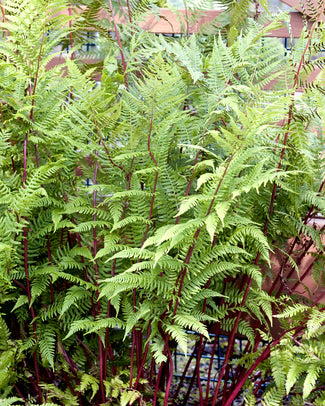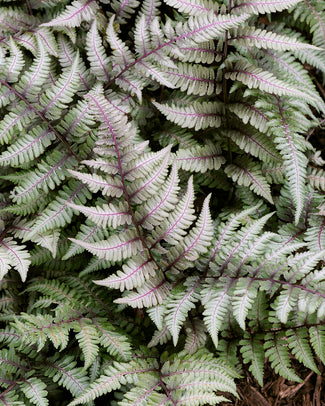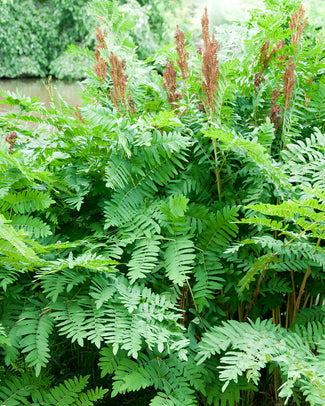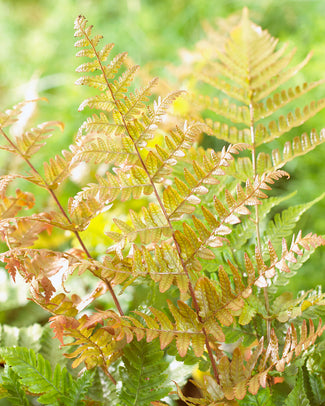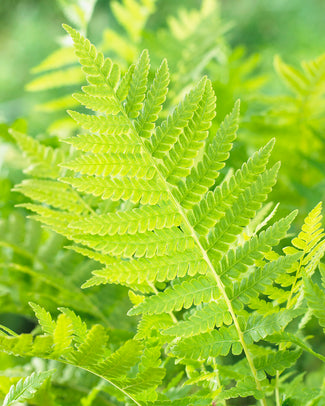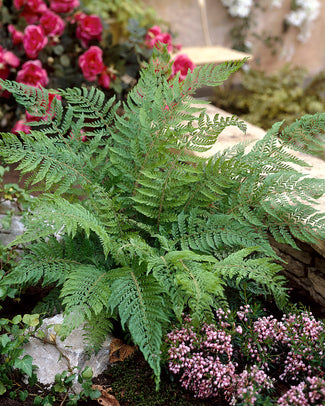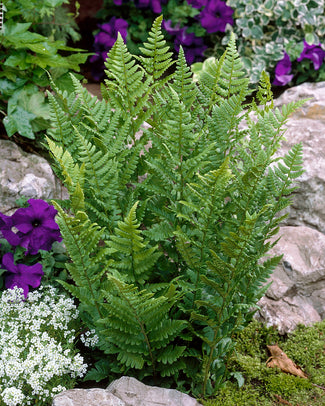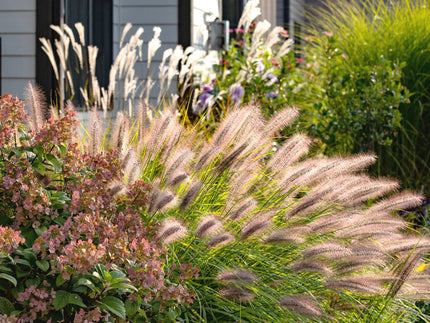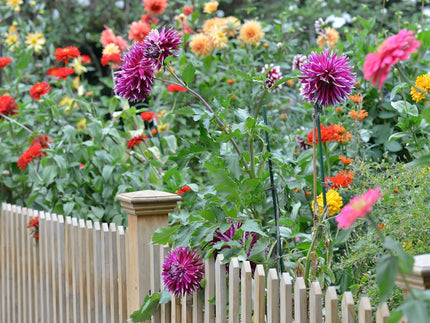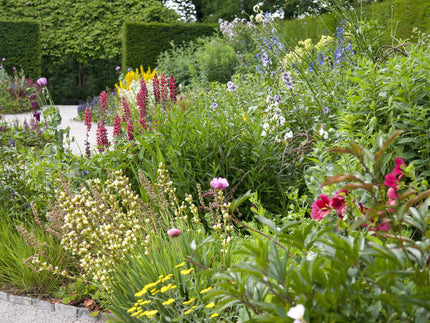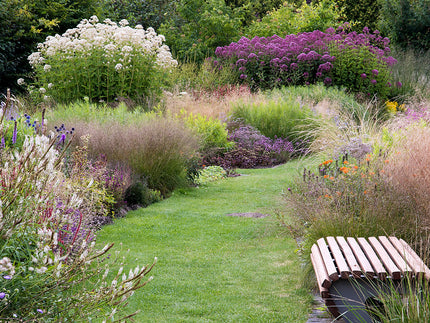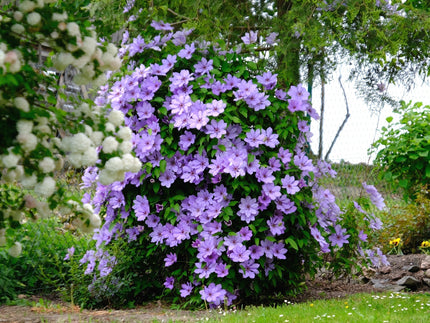How to plant Dryopteris
This large genus of mainly deciduous ferns contains many easy to grow, garden favourites such as Dryopteris erythrosora (Copper Shield Fern). Their finest moment is in spring as the triangular shaped fronds unfurl majestically in a dramatic display. The fronds persist until autumn when they turn pale brown before dying back to the resting crown of the plant in winter, although a few will remain evergreen. With such a large group comes great diversity so it’s worth checking the expected mature size of each species before planting. Most enjoy a moist, well drained soil, but some will tolerate drier conditions once established. With a naturalistic habit, these hardy ferns form an integral part of any woodland border or similarly shaded planting scheme.
How to plant
- Plant Dryopteris in the spring from February to May.
- Soak the roots in water for 3-6 hours prior to planting. Pot into temporary 2 litre pots, using a good quality multi-purpose compost. Grow them on in a sheltered spot outside. They can be transplanted to their final positions after 6-8 weeks or once growth is well established.
- Plant the roots with the crown just at the soil surface.
- Although perfectly hardy, they prefer a sheltered spot, with protection from hard frosts and strong winds.
- In general, Dryopteris prefer a moist, well drained soil. However once established, some species such as Dryopteris 'Cristata' can cope admirably with dry, shaded conditions.
- Choose a position in dappled or light shade. In sunnier locations the fronds are likely to become scorched.
- Water-in after planting and keep hydrated when in growth, particularly during the first year.
Aftercare
- Most Dryopteris are deciduous with new fronds emerging in spring. The foliage will naturally die back in autumn and can then be trimmed away to just above ground level. However evergreen species including Dryopteris 'Cristata', can be left intact and enjoyed over winter. Old and damaged fronds can then be removed in the spring to make way for new growth.
- Once established they need very little maintenance but will appreciate an autumn mulch of leaf mould. Avoid covering the crown of the plant as this may lead to rotting.
































































































































































































